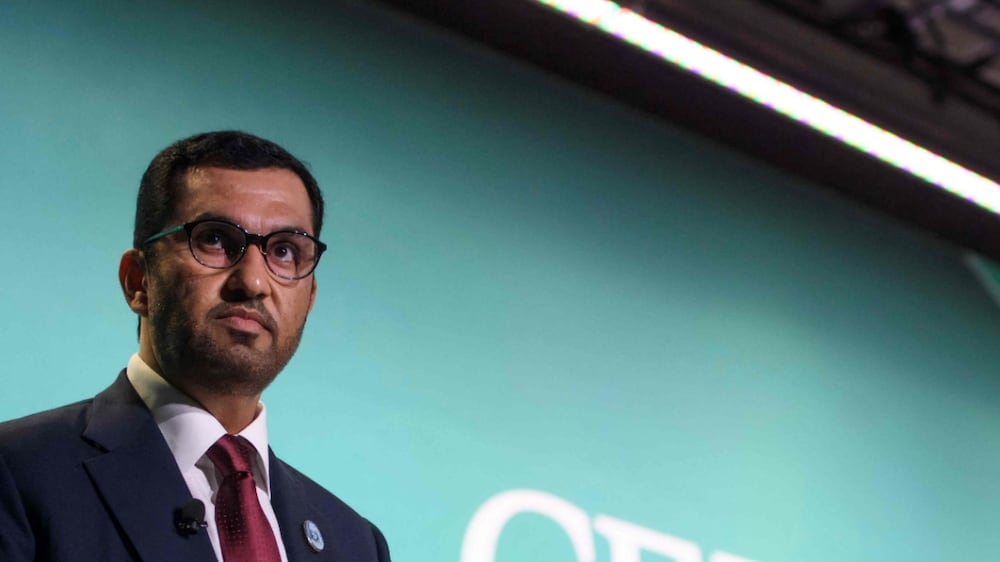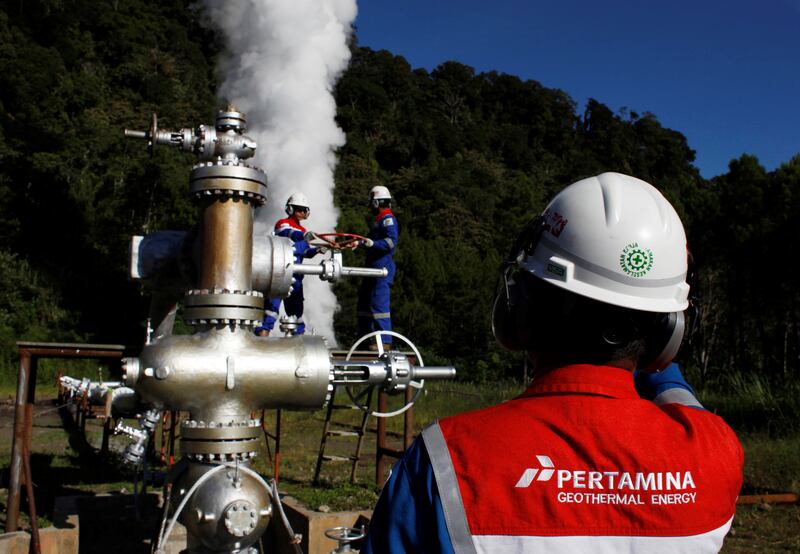This energy source is low-carbon, is reliably available day-round without varying with weather or seasons, is geographically widespread, reasonably cost-effective, does not require scarce materials and makes use of well-known technologies.
Yet it ranks only fifth in capacity among the renewables, far behind solar, wind, hydropower and bioenergy. As Masdar and Adnoc now show interest, is it time for geothermal to come to the boil?
The Earth’s heat comes from the continuous cooling of its interior following the planet’s fiery birth, and from the decay of natural radioactive elements.
With temperatures typically gaining 30 degrees Celsius for every kilometre down, the exploitation of geothermal energy has historically been limited to a few countries, mostly around the Pacific “ring of fire”, the mid-Atlantic Ridge and the East African Rift Valley, where magma brings high temperatures close to the surface. These include California in the US, Indonesia, Philippines and Japan.
The role of geothermal today is tiny: in the US, which has the world’s largest geothermal capacity, it is still only 0.3 per cent of total installed electricity generation.
It has a much higher share in countries such as El Salvador, Kenya and Iceland, but they have only small electricity grids.
Traditional geothermal power requires permeable hot rocks with water circulating through them, that could be brought to the surface to make steam and run a turbine.
Investment bank Lazard presents geothermal electricity as having a cost between 6.1 to 10.2 US cents per kilowatt-hour. This is more expensive than wind and solar, but cheaper than moderately-priced gas, particularly when including costs for carbon dioxide emissions for projects in Europe. Given Europe’s desperate need to replace Russian gas, heating with geothermal seems an obvious solution.
Geothermal has the advantage of being dispatchable — it can be turned on or off as required to balance demand and variable renewable generation.
As well as producing electricity, it can yield low-temperature heat to warm homes and greenhouses in cold climates, or medium temperatures for industries such as food processing, paper and chemicals. This heat can also drive air-conditioning chillers and desalination in hot, arid areas such as the Gulf.
There is also growing interest in extracting minerals from geothermal brines — particularly lithium, a key ingredient of batteries. And carbon dioxide can be sequestered in geothermal systems, removing it from the atmosphere.
Promising areas in the Middle East include volcanic districts in Iran and eastern Turkey, the hot springs of Aegean Turkey, and the Red Sea rift between Africa and Arabia, dotted with volcanic islands such as Jebel Al Tair off Yemen, which erupted in 2007.
Western Saudi Arabia is strewn with recent lava flows, the last eruption happening as late as 1256. Other than in Turkey and some very minor efforts in Iran, though, geothermal power has not been adopted in the region.
Given its synergies with oilfield technologies, it is surprising petroleum companies have not been involved more, as they have sought to expand their green businesses. Chevron used to have a sizeable geothermal unit in Indonesia and the Philippines, but sold it in 2017, while Shell and others are dabbling.
Dr Sultan Al Jaber says this is the decade to provide clean energy the world needs

Maybe that is about to change.
In February, Abu Dhabi’s green energy company Masdar made a strategic investment in Pertamina Geothermal, a unit of the Indonesian state oil corporation, which raised $595 million in an initial public offering for a quarter of its shares. Pertamina Geothermal intends to invest $4 billion to double its capacity by 2027-2028.
And in March, Masdar agreed with Adnoc Drilling to explore geothermal opportunities, with the Adnoc unit potentially providing drilling services.
In 2021, Dubai-based district cooling company Tabreed also agreed to work on two deep geothermal wells at Masdar City.
Masdar targets 100 gigawatts of capacity by 2030, up from 20 gigawatts today, which would make it one of the world’s biggest international renewable players. The majority of this will be wind and solar, but there is room for other technologies.
The breakthrough could come from engineered geothermal systems.
These use the past decade’s advances in oil- and gas-well technologies, including horizontal drilling, hydraulic fracturing, advanced reservoir simulation and corrosion-resistant materials. Wells can be placed into “hot dry rock”, which is then fractured, and water circulated to heat up. This greatly expands the scope of geothermal, eliminating the need to find natural hot-water systems.
In 2021, the venture capital arms of BP and Chevron invested in Eavor, a Canadian start-up using a closed-loop system. The concept is that cold water is injected into one side, heats up and rises on the other, avoiding the need for pumping, so that even relatively cool rocks are viable.
Systems circulating high-pressure supercritical carbon dioxide, which flows like a gas but has the density and heat capacity of a liquid, could be more efficient than those based on water.
Innovative drilling approaches using high-frequency radio waves or lasers are being trialled, going deeper with tools able to withstand the high temperatures of 400 degrees Celsius or more, compared to the 150-200 degrees encountered in typical oilfield operations. These could tap supercritical water and increase a well’s power output ten times.
Oil service majors Baker Hughes and Halliburton are researching such technologies, which could bring costs down to 4.6 cents per kilowatt-hour.
The US Department of Energy has issued a “moon shot” to cut the cost of enhanced geothermal 90 per cent by 2035.
The recently-passed Inflation Reduction Act offers generous tax credits to geothermal, as to other renewable technologies.
Maybe it’s time for the Middle East too to delve deep into the Earth, not for oil but for heat.
Robin M. Mills is chief executive of Qamar Energy, and author of The Myth of the Oil Crisis






